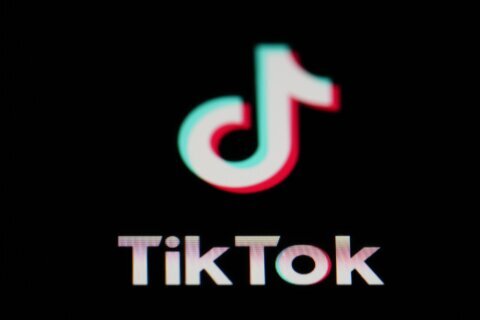While drones aren’t exactly filling Earth’s skies yet, there’s no doubt that the sector is expanding at a significant growth rate in the last half of 2023. Data from Grand View Research shows the global commercial drone market rising from an estimated $19.9 billion in 2022 to $57.2 billion in 2030 at a compound annual growth rate, or CAGR, of 13.9%.
“The market growth is attributed to the increasing enterprise application of drones across various industry verticals,” Grand View states in a recent research report. “Several drone manufacturers are continually testing, inventing and upgrading solutions for diverse markets.” Researchers add that the integration of the latest tech in commercial drones is “opening new growth opportunities for the commercial drone industry as the business use cases of commercial drones have expanded significantly over the past few years.”
[Sign up for stock news with our Invested newsletter.]
Drones, also known as unmanned aircraft systems, or UAS, are defined as aircraft operating without a human pilot. Structurally, drones comprise the actual drone aircraft, a ground-operated controller and a sophisticated communications system between the aircraft and the controller that tells the vehicle what to do and where to go. Drones may be operated by onboard computer systems or via remote control by a human operator.
With the industry stacking billions of dollars annually and consumer demand for drone services expanding, investors may want to know the leading players in the unmanned vehicle market. In late 2023, these drone companies top that list:
| Drone stock | YTD return as of Sept. 11 |
| Amazon.com Inc. (ticker: AMZN) | 70.4% |
| EHang Holdings Ltd. (EH) | 92.9% |
| Kratos Defense & Security Solutions Inc. (KTOS) | 42.9% |
| AeroVironment Inc. (AVAV) | 32.3% |
| Boeing Co. (BA) | 10.8% |
| Joby Aviation Inc. (JOBY) | 117.3% |
| Northrop Grumman Corp. (NOC) | -21.1% |
Amazon.com Inc. (AMZN)
Amazon has come a long way since 2013, when founder Jeff Bezos predicted the company would be delivering 5-pound packages via drone in about five years. Drone package delivery may not have met Bezos’ initial timeline, but Amazon tested its Prime Air drone delivery service this summer in two pilot markets in California and Texas.
While Amazon isn’t a pure drone play, it should be a massive driver of sector growth, given the fact that it currently delivers about 1.6 million packages per day via human drivers and is setting its sights on quicker and more efficient deliveries via drone by 2024. But the road to drone-delivered packages hasn’t been easy, and CNBC reported a Prime Air drone crash in late June followed by the departure of two key executives in that segment.
Still, it’s usually smart business to bet on Amazon, a company with a $1.5 trillion market capitalization and a track record of steady performance. AMZN shares are already up 70.4% in 2023 as of Sept. 11.
EHang Holdings Ltd. (EH)
EHang manufactures autonomous aerial vehicle products and services, including passenger transport, logistics, smart city planning, and aerial media systems and services. The company is moving faster than even Amazon in the drone delivery derby, having tested 39,000 flights in 14 countries, including 9,300 low-altitude tourism flights in 18 Chinese cities. As of Sept. 11, the stock has exploded by 92.9% in 2023 thanks to the progress its drones are making through the Chinese regulatory system.
The company got some good news in late August, as its unmanned aircraft cloud computing system has been cleared by China’s Civil Aviation Administration for trial operations. That should set the stage for EHang’s autonomous aerial vehicle technology to operate commercially in the next few years. The company also announced in July that it received $23 million in private funding from an investment group led by K-pop music mogul Lee Soo Man.
[Read: Should You Invest in Nvidia Stock? 3 Pros, 3 Cons]
Kratos Defense & Security Solutions Inc. (KTOS)
This San Diego-based drone manufacturer is on a roll in 2023, with its share price rising 42.9% on a year-to-date basis as of Sept. 11. Shares were buoyed by a better-than-expected second-quarter earnings report, in which Kratos had a net loss of $2.7 million, or 2 cents per share, compared with $4.7 million, or 4 cents per share, in the same period in 2022. Q2 revenues were up 15%, to $256.9 million, easily ahead of the $235.9 million figure predicted by analysts.
Full-year guidance is up as well. Company officials say Kratos should rake in between $240 million and $260 million in the third quarter, compared with analyst estimates of $252 million.
The company is also garnering positive analyst ratings, with Raymond James issuing an “outperform” call and Truist giving a “buy” rating to KTOS in the past six weeks.
In June, the company also announced a five-year, $46.7 million contract with the U.S. Navy to undergo ground testing of thermal protection materials and produce flight hardware for the Naval Surface Warfare Center Dahlgren Division.
AeroVironment Inc. (AVAV)
This unmanned aircraft system manufacturer has seen its share price rise by 32.3% through Sept. 11. The Arlington, Virginia-based company’s unmanned air defense products, particularly its Switch and Puma drones, are being used in the ongoing Russia-Ukraine conflict, with no sign of that military confrontation slowing down anytime soon. The U.S. military is watching how AVAV drone technologies, specifically its Switchblade 300 and 600 unmanned aerial systems, are aiding Ukraine in its home-front defense campaign.
AVAV saw first-quarter revenues skyrocket by 40% after strong defense-industry support for its unmanned aircraft systems. Liquidity is no problem with AeroVironment, as the company has a funding backlog of $540 million, up from $424 million in the prior quarter.
In late August, AVAV said it will purchase robotics control system manufacturer Tomahawk Robotics for $120 million. More robust AI-based unmanned systems controls should boost drone performance and contribute to revenue growth, the company stated. AVAV also received an upgraded “outperform” rating from Baird on Sept. 6, with the firm recognizing AeroVironment’s “strong start” to fiscal year 2024.
Boeing Co. (BA)
This aerospace titan has reported positive sales numbers over the past two quarters, with an 18% revenue increase in its second-quarter filing, due mostly to a significant rise in consumer and business air travel. Analysts are also expecting a profit in 2024, which would be a clear sign of recovery after a four-year earnings slump and a likely profit loss in 2023. All that helped BA shares rebound from a rough first half of the year to a gain of 10.8% year to date as of Sept. 11.
The aerospace giant continues to invest heavily in its drone programs. In April, Boeing subsidiary Insitu rolled out its Integrator unmanned aerial system, which can take off and land in vertical air mode and can operate in tough weather conditions, on high seas and in strong winds on land.
Boeing has a new 300,000-square-foot, state-of-the-art manufacturing plant in St. Louis, where the company’s MQ-25 Stingray will be built. The MQ-25 is the U.S. Navy’s first-ever drone aircraft, which is primarily used to refuel fighter jets, allowing those aircraft to expand their combat ranges and stay in the air for longer periods.
[ 7 Best Semiconductor ETFs to Buy in 2023]
Joby Aviation Inc. (JOBY)
Joby is losing some steam in the second half of 2023, even with its share price up 117.3% on a year-to-date basis. The stock is down 27.3% in the last two months, and it appears to be suffering from a low-outlook scenario driven by investors who are taking a second look at companies, like Joby, that went public by merging with special-purpose acquisition companies (known as SPACs on Wall Street). Increasingly, investors are viewing SPACs as a risky bubble play as multiple companies who issued new stock and follow-up guidance saw their financial numbers finishing way off the mark in earnings reports, leading to distrust among investors.
Otherwise, Joby would seem to be a positive story in 2023. The company recently got the green light from the Federal Aviation Administration to begin test-flying its all-electric vertical take-off and landing, or eVTOL, aircraft, which boosted JOBY stock by more than 60% in late June.
Additionally, the market prospects for so-called flying cars look promising, a good sign for early arrival companies like Joby. Morgan Stanley has estimated that the aerial vehicle market could exceed $1 trillion by 2040 and expand exponentially after that.
Yet big investors seem to be pruning their JOBY positions in the second half of the year, which isn’t encouraging for the company’s shares in the short term. Intel Corp. (INTC), for example, trimmed its Joby position by 10% after the second quarter.
Northrop Grumman Corp. (NOC)
Northrop Grumman has underperformed the market so far in 2023, and its share price has fallen by 21.1% as of Sept. 11.
Even so, its underlying numbers look encouraging, and Northrop Grumman raised its full-year sales guidance to between $38.4 billion and $38.8 billion, compared with its previous estimate of $38 billion to $38.4 billion. Northrop’s sales rose 9% year over year to $9.6 billion for the three months ended June 30. It finished the quarter with a backlog of $78.8 billion.
The company also has a decent dividend story, with a decent per-share yield of 1.8% after announcing a hike to its quarterly dividend in mid-August to $1.87 per share, payable on Sept. 13.
NOC continues to make inroads in the unmanned aerial systems market, recently announcing that it’s been chosen by the U.S. Army to participate in Increment 2 of the future tactical unmanned aircraft system, or FTUAS, program. Working with technology partner Shield AI, Northrop Grumman is “developing an enhanced-capability version of the innovative V-BAT aircraft to replace the Army’s long-serving RQ-7B Shadow tactical UAS,” the company said in a recent press release.
The company also recently contracted with Naval Air Systems Command to prepare parts and support for two E-2D Advanced Hawkeye aircraft for $60 million. In addition, it inked a deal with the Space Development Agency to supply 36 satellites for SDA’s Tranche 2 Transport Layer communications and defense system.
More from U.S. News
7 Stocks That Outperform in a Recession
7 Best Cryptocurrency Mining Stocks
7 Stocks Cathie Wood is Buying
7 Drone Stocks to Buy in 2023 originally appeared on usnews.com
Update 09/12/23: This story was previously published at an earlier date and has been updated with new information.







